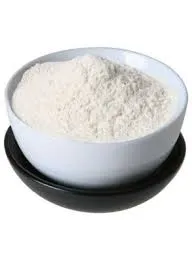
Oct . 12, 2024 00:19 Back to list
hpmc solubility
Understanding HPMC Solubility A Comprehensive Overview
Hydroxypropyl Methylcellulose (HPMC) is a widely used polymer in various industries, notably in pharmaceuticals, food, and construction. Its unique properties, such as solubility in water and film-forming capabilities, make it an essential ingredient in many applications. In this article, we will explore the solubility of HPMC, factors influencing its solubility, and its implications in real-world applications.
What is HPMC?
HPMC is a semi-synthetic, non-ionic polymer derived from cellulose. It is produced by treating cellulose with propylene oxide and methyl chloride, creating a compound with hydroxypropyl and methyl groups that enhance its solubility and functionality. HPMC is known for its versatility, stability, and ability to modify the properties of various formulations, making it a crucial component in many products.
Solubility of HPMC
HPMC is soluble in cold water. The solubility is influenced by several factors, including the degree of substitution (DS), molecular weight, and temperature. The degree of substitution refers to the number of hydroxyl groups on the cellulose chain that have been replaced by hydroxypropyl and methyl groups. A higher DS typically leads to greater solubility in water.
The molecular weight of HPMC also plays a significant role in its solubility. Lower molecular weight HPMC tends to dissolve more readily than higher molecular weight grades. It is essential to select the appropriate grade based on the desired application to ensure optimal performance.
Temperature can also influence HPMC solubility. Generally, increasing the temperature can enhance the dissolution rate. At higher temperatures, the kinetic energy of the water molecules increases, allowing them to interact more effectively with the HPMC chains. However, excessive heat can lead to degradation of the polymer, affecting its properties.
Factors Affecting HPMC Solubility
1. Concentration The concentration of HPMC in a solution affects its solubility. Higher concentrations can lead to gel formation, reducing the overall solubility. It’s crucial to balance the concentration to achieve the desired viscosity and flow properties without compromising solubility.
hpmc solubility

2. pH Levels Variations in pH can impact the solubility of HPMC. While HPMC is primarily non-ionic and thus less sensitive to pH changes, extreme conditions may alter its solubility characteristics.
3. Presence of Salts and Other Compounds The existence of salts or other compounds in the solution can influence the solubility of HPMC. For instance, ionic interactions may hinder the dissolution process, while certain additives may enhance solubility.
4. Formulation Conditions The method of incorporation into formulations (e.g., dry blending or wet granulation) can also affect solubility. Conditions during manufacturing, such as mixing speed and time, can lead to variations in solubility outcomes.
Applications of HPMC Solubility
The solubility of HPMC plays a critical role in several applications
- Pharmaceuticals HPMC is used as a binder, film-coating agent, and controlled-release agent in tablets and capsules. Its solubility characteristics are crucial for ensuring the appropriate release rates of active pharmaceutical ingredients (APIs).
- Food Industry In food products, HPMC serves as a thickener, emulsifier, and stabilizer. Its solubility in water makes it useful for creating smooth textures and improving mouthfeel.
- Construction In the construction sector, HPMC is utilized as an additive in mortars and adhesives to enhance water retention, workability, and adhesion.
Conclusion
Understanding the solubility of HPMC is essential for leveraging its properties across various industries. By considering factors such as degree of substitution, molecular weight, concentration, and formulation conditions, manufacturers can optimize HPMC’s performance in their products. Its versatility makes HPMC a valuable polymer, and ongoing research continues to explore its potential in innovative applications. As industries evolve, the importance of mastering HPMC solubility will undoubtedly grow, paving the way for enhanced formulations and improved product outcomes.
-
Versatile Hpmc Uses in Different Industries
NewsJun.19,2025
-
Redispersible Powder's Role in Enhancing Durability of Construction Products
NewsJun.19,2025
-
Hydroxyethyl Cellulose Applications Driving Green Industrial Processes
NewsJun.19,2025
-
Exploring Different Redispersible Polymer Powder
NewsJun.19,2025
-
Choosing the Right Mortar Bonding Agent
NewsJun.19,2025
-
Applications and Significance of China Hpmc in Modern Industries
NewsJun.19,2025







